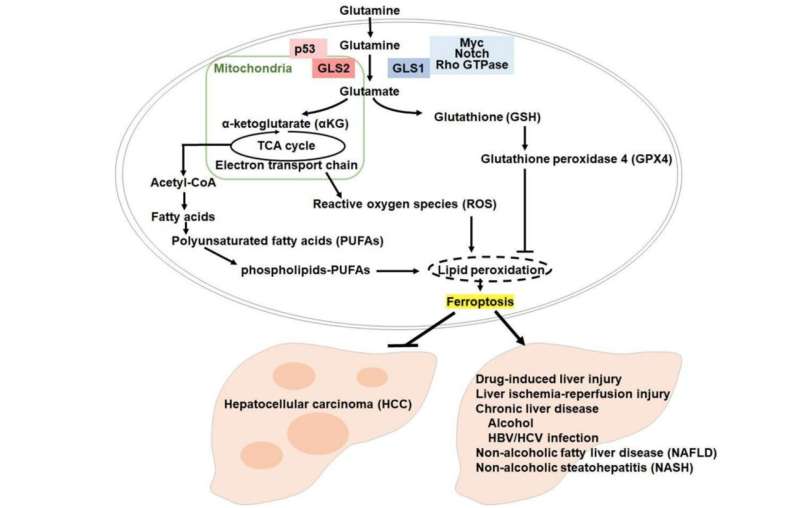
A new editorial paper titled “GLS2 shapes ferroptosis in hepatocellular carcinoma” has been published in Oncotarget.
In their new editorial, researchers Sawako Suzuki, Divya Venkatesh, Tomoaki Tanaka, and Carol Prives from Columbia University discuss ferroptosis regulation of GLS2 as a potential therapeutic strategy against liver diseases.
“More than a decade has passed since our group as well as Hu et al., identified glutaminase (GLS2) as a p53 target gene that promotes the tricarboxylic acid cycle (TCA) via α-ketoglutarate (αKG) and lowers oxidative stress via increasing glutathione (GSH),” the researchers write.
Two years after this Dixon et al., described a form of cell death they named ferroptosis which is caused by iron-mediated lipid peroxidation. Then, three years later, Gao et al., reported that GLS2 but not GLS1 is an inducer of ferroptosis in human cancer cells. Ferroptosis had first been shown to be regulated by p53 via repression of SLC7A11. The circle was closed by a study from the Murphy group who reported that a cancer-related nonsynonymous mutation in p53 (P47S) is correlated with failure to either activate GLS2 expression or produce ferroptosis.
“Our recent study (Suzuki et al.) has validated the ability of GLS2 to promote ferroptosis in murine models,” the researchers conclude.
More information:
Sawako Suzuki et al, GLS2 shapes ferroptosis in hepatocellular carcinoma, Oncotarget (2023). DOI: 10.18632/oncotarget.28526
Journal information:
Oncotarget
Source: Read Full Article
